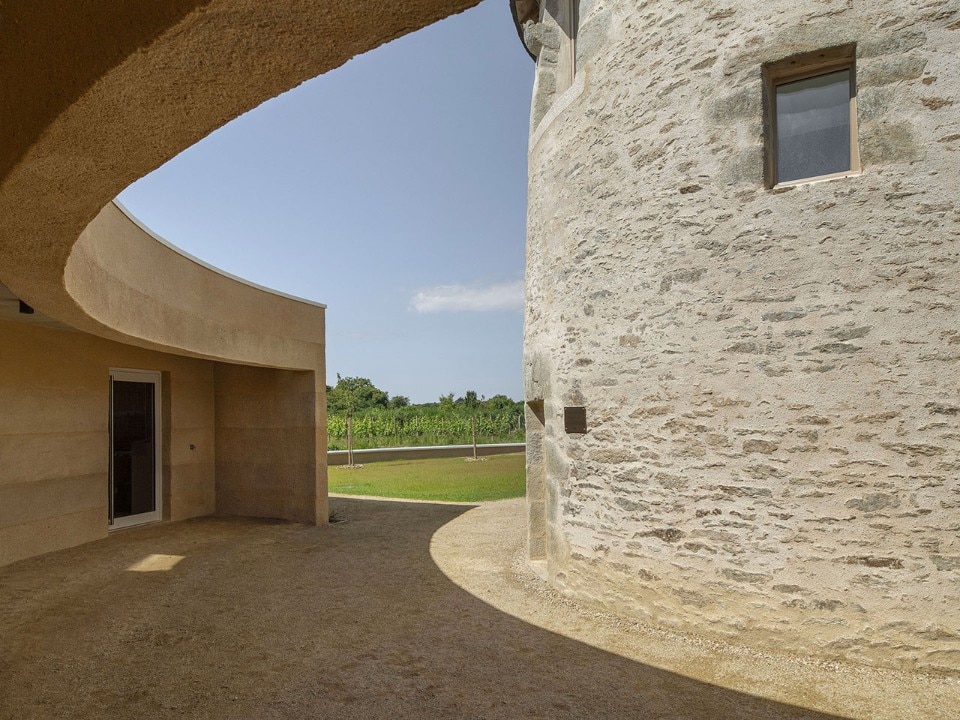In France, on the peninsula of Rhuys, the municipality of Sarzeau has launched an initiative to revive the local wine culture that, for centuries, defined the area, located in the heart of Brittany, for centuries.
This revival of the wine industry has become a project of replanting vineyards and an opportunity to regenerate and restore some of the historic structures that dot the countryside.
An ancient mill in Brittany becomes a contemporary winery
In Carmen Maurice Architecture's renovation project, the walls tell of the nearby Atlantic Ocean through their materials, while a French countryside area returns to the winemaking vocation of its landscape.
Photo Guillaume Amat
Photo Guillaume Amat
Photo Guillaume Amat
Photo Guillaume Amat
Photo Guillaume Amat
Photo Guillaume Amat
Photo Guillaume Amat
Photo Guillaume Amat
Photo Guillaume Amat
Photo Guillaume Amat
Photo Guillaume Amat
Photo Guillaume Amat
Photo Guillaume Amat
Photo Guillaume Amat
Photo Guillaume Amat
Project drawing
Project drawing
View Article details
- Kevin Santus
- 28 October 2024
- Sarzeau, France
- Carmen Maurice Architecture
- Winery
The project by Carmen Maurice fits seamlessly into this process. In the French countryside, a historic mill has been restored, with a low addition built to accommodate all the functions necessary for a winery’s operations. This new structure forms a semicircular shape around the old mill and, through careful material choices, integrates harmoniously with the landscape. The building’s finish, featuring a sequence of horizontal bands, remains its only decorative element. The lime plaster incorporates local sand and shell fragments, indelibly linking the building to its context and evoking the ocean nearby.

In terms of layout, the semicircular structure combines private and public spaces in a way that harmonizes both work and tourist visits. Sales areas are open to the exterior, while the tasting room provides an intimate setting facing inward.
The winemaking room, which requires a larger volume, is partially set into the ground, leaving the building as a pure form in the landscape, delicately framed by the vineyard.